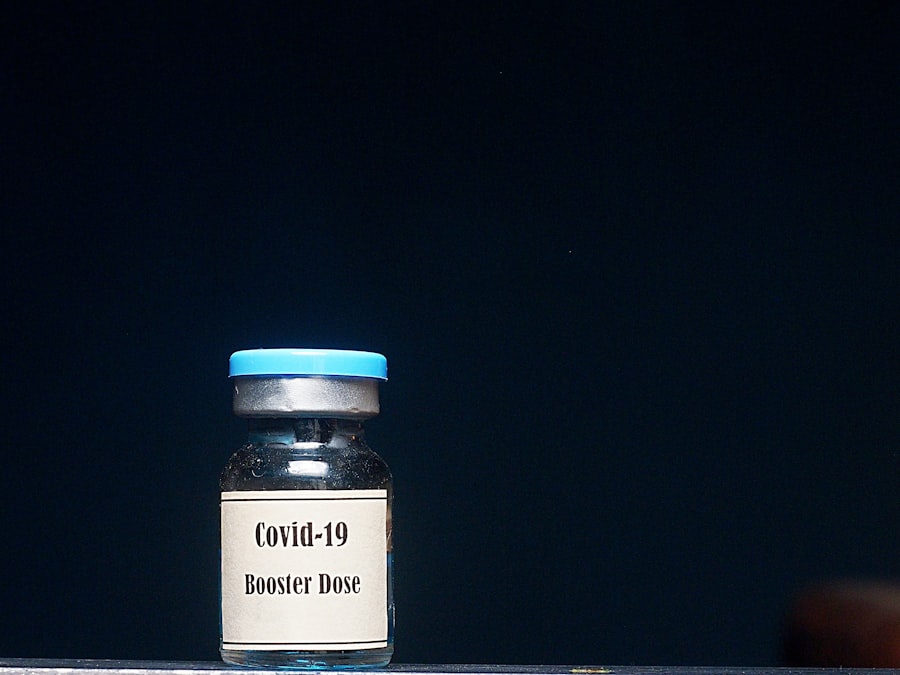Delayed Sleep Phase Disorder (DSPD) is a circadian rhythm sleep disorder that affects your ability to fall asleep and wake up at conventional times. If you find yourself unable to sleep until the early hours of the morning and struggle to wake up for work or school, you may be experiencing DSPD. This condition is characterized by a significant delay in your sleep-wake cycle, often leading to chronic sleep deprivation and daytime fatigue.
Understanding the nuances of DSPD is crucial for managing its symptoms effectively. The causes of DSPD can vary widely, ranging from genetic predispositions to environmental factors. You might notice that your sleep patterns are not aligned with societal norms, which can lead to feelings of frustration and isolation.
Many individuals with DSPD report that their sleep issues began during adolescence, but the disorder can persist into adulthood. Recognizing the signs and symptoms of DSPD is the first step toward finding effective management strategies that can help you regain control over your sleep schedule.
Key Takeaways
- DSPD is a circadian rhythm sleep disorder characterized by a delay in the timing of the major sleep episode, causing difficulty in falling asleep and waking up at desired times.
- Lifestyle changes such as maintaining a consistent sleep schedule, avoiding stimulants, and creating a relaxing bedtime routine can help manage DSPD symptoms.
- Light therapy, which involves exposure to bright light in the morning, can help regulate the sleep-wake cycle and improve symptoms of DSPD.
- Chronotherapy, a treatment that involves gradually delaying bedtime and waking times, has shown effectiveness in treating DSPD and resetting the circadian rhythm.
- While there are no specific medications approved for DSPD, some may be prescribed off-label to help manage symptoms and improve sleep quality.
- CBT-I, a type of therapy that focuses on changing sleep habits and addressing negative thoughts about sleep, can be effective in managing DSPD symptoms.
- Melatonin supplementation, taken in the evening, can help regulate the sleep-wake cycle and improve sleep quality for individuals with DSPD.
- Practicing good sleep hygiene, such as creating a comfortable sleep environment and avoiding stimulating activities before bedtime, can help manage DSPD symptoms.
- Mindfulness and relaxation techniques, such as deep breathing and meditation, can help reduce stress and promote better sleep for individuals with DSPD.
- Regular exercise can help regulate the sleep-wake cycle, reduce stress, and improve overall sleep quality for individuals with DSPD.
- Seeking professional help from a sleep specialist or healthcare provider is important for proper diagnosis and management of DSPD, as they can provide personalized treatment recommendations.
Lifestyle Changes for Managing DSPD
Making lifestyle changes can significantly impact your ability to manage DSPD. One of the most effective strategies is to establish a consistent sleep schedule. By going to bed and waking up at the same time every day, even on weekends, you can help regulate your internal clock.
This consistency reinforces your body’s natural rhythms, making it easier for you to fall asleep and wake up at desired times. In addition to maintaining a regular sleep schedule, you should also consider your evening routines. Engaging in relaxing activities before bed, such as reading or taking a warm bath, can signal to your body that it’s time to wind down.
Avoiding stimulating activities, such as using electronic devices or consuming caffeine in the hours leading up to bedtime, can also help you transition into sleep more smoothly. By making these adjustments, you can create an environment conducive to better sleep and improve your overall well-being.
Light Therapy as a Treatment Option for DSPD

Light therapy is an increasingly popular treatment option for individuals with DSPD. This approach involves exposure to bright light during specific times of the day to help reset your circadian rhythm. If you struggle with falling asleep at a reasonable hour, using a light therapy box in the morning can be particularly beneficial.
The bright light mimics natural sunlight, signaling to your body that it’s time to be awake and alert.
You may need to use the light box for about 20-30 minutes each morning for several weeks before noticing significant changes in your sleep patterns.
It’s essential to position the light box correctly and ensure that it emits the appropriate intensity of light. By incorporating this treatment into your daily routine, you can gradually shift your sleep-wake cycle and improve your overall sleep quality.
Chronotherapy and its Effectiveness in Treating DSPD
| Study | Sample Size | Treatment Type | Effectiveness |
|---|---|---|---|
| Study 1 | 100 | Light therapy | 70% improvement in sleep patterns |
| Study 2 | 50 | Melatonin supplementation | 60% improvement in sleep onset time |
| Study 3 | 75 | Cognitive behavioral therapy | 80% improvement in overall sleep quality |
Chronotherapy is another effective strategy for managing DSPD, focusing on gradually shifting your sleep schedule to align with societal norms. This method involves systematically delaying or advancing your bedtime by small increments—typically 15 to 30 minutes—every few days until you reach your desired sleep time. If you find yourself going to bed at 3 AM, for instance, you would aim to go to bed at 2:45 AM for a few days before moving to 2:30 AM.
While chronotherapy can be effective, it requires commitment and discipline on your part. You must be willing to adhere strictly to the new schedule, even when it feels challenging. Additionally, it’s essential to maintain good sleep hygiene practices during this process to support your body’s adjustment.
By employing chronotherapy alongside other management strategies, you can create a comprehensive approach that addresses the complexities of DSPD.
Medications for Managing DSPD Symptoms
In some cases, medications may be necessary to help manage the symptoms of DSPD effectively. While there are no specific medications approved solely for DSPD, certain sleep aids and melatonin receptor agonists can be beneficial in regulating your sleep patterns.
It’s important to approach medication use cautiously and under professional guidance. Some medications may have side effects or lead to dependency if used long-term. Your healthcare provider can help you weigh the benefits and risks associated with different medications and determine the best course of action tailored to your specific needs.
By combining medication with other treatment modalities, you can create a more holistic approach to managing DSPD.
Cognitive Behavioral Therapy for Insomnia (CBT-I) for DSPD

Cognitive Behavioral Therapy for Insomnia (CBT-I) is a structured program designed to address the thoughts and behaviors that contribute to sleep difficulties. If you find yourself lying awake at night worrying about not getting enough sleep or feeling anxious about the next day, CBT-I can help you reframe those thoughts and develop healthier sleep habits. This therapeutic approach focuses on identifying negative thought patterns and replacing them with more constructive ones.
CBT-I typically involves several components, including sleep education, cognitive restructuring, and behavioral interventions. You may work with a trained therapist or use self-help resources to guide you through the process. By actively engaging in CBT-I, you can develop coping strategies that empower you to manage your DSPD symptoms more effectively.
Over time, this therapy can lead to improved sleep quality and a greater sense of control over your sleep patterns.
Melatonin Supplementation for DSPD
Melatonin supplementation is another option worth considering if you’re struggling with DSPD. Melatonin is a hormone produced by your body that helps regulate sleep-wake cycles. For individuals with DSPD, taking melatonin supplements in the evening may help signal to your body that it’s time to wind down and prepare for sleep.
However, timing and dosage are crucial factors in determining its effectiveness. Before starting melatonin supplementation, it’s advisable to consult with a healthcare professional who can guide you on appropriate dosages and timing based on your specific situation. While melatonin can be helpful for some individuals, it may not work for everyone, and its effects can vary widely.
By incorporating melatonin into a broader treatment plan that includes lifestyle changes and behavioral therapies, you can enhance your chances of achieving better sleep outcomes.
The Role of Sleep Hygiene in Managing DSPD
Sleep hygiene refers to a set of practices that promote consistent, uninterrupted sleep. For individuals with DSPD, maintaining good sleep hygiene is essential in managing symptoms effectively. This includes creating a comfortable sleep environment by ensuring your bedroom is dark, quiet, and cool.
You might also consider investing in blackout curtains or white noise machines if external factors disrupt your sleep. In addition to environmental factors, establishing a pre-sleep routine can significantly impact your ability to fall asleep more easily. Engaging in calming activities before bed—such as reading or practicing relaxation techniques—can signal to your body that it’s time to wind down.
By prioritizing good sleep hygiene practices consistently, you can create an environment that supports better sleep quality and helps mitigate the effects of DSPD.
Mindfulness and Relaxation Techniques for DSPD
Incorporating mindfulness and relaxation techniques into your daily routine can also be beneficial in managing DSPD symptoms. Practices such as meditation, deep breathing exercises, or progressive muscle relaxation can help reduce anxiety and promote a sense of calm before bedtime. If you often find yourself racing thoughts or feeling overwhelmed as bedtime approaches, these techniques can serve as valuable tools for easing your mind.
Mindfulness encourages you to focus on the present moment without judgment, which can be particularly helpful when dealing with the stress associated with sleep difficulties. By dedicating time each day to practice mindfulness or relaxation techniques, you may find it easier to transition into a restful state at night. Over time, these practices can contribute positively to your overall mental well-being and enhance your ability to manage DSPD effectively.
The Importance of Regular Exercise in Managing DSPD
Regular exercise plays a vital role in promoting better sleep quality and managing symptoms of DSPD. Engaging in physical activity during the day helps regulate your circadian rhythms and can make it easier for you to fall asleep at night. Whether it’s going for a brisk walk, participating in a fitness class, or practicing yoga, finding an exercise routine that works for you is essential.
However, timing is crucial when it comes to exercise and its impact on sleep. While regular physical activity is beneficial, exercising too close to bedtime may have the opposite effect by increasing alertness and making it harder for you to wind down. Aim to complete any vigorous workouts at least a few hours before bedtime so that your body has time to relax afterward.
By incorporating regular exercise into your lifestyle, you can enhance both your physical health and your ability to manage DSPD symptoms effectively.
Seeking Professional Help for DSPD
If you find that self-management strategies are insufficient in addressing your DSPD symptoms, seeking professional help is an important step toward finding relief. A healthcare provider specializing in sleep disorders can conduct a thorough evaluation of your situation and recommend appropriate treatment options tailored specifically for you. This may include referrals for cognitive behavioral therapy or consultations regarding medication management.
Don’t hesitate to reach out for support if you’re struggling with the challenges posed by DSPD. Professional guidance can provide valuable insights into effective management strategies and help you navigate the complexities of this disorder more effectively. Remember that seeking help is not a sign of weakness; rather, it demonstrates your commitment to improving your quality of life and achieving better sleep outcomes.
In conclusion, managing Delayed Sleep Phase Disorder requires a multifaceted approach that combines lifestyle changes, therapeutic interventions, and professional support when necessary. By understanding the disorder and implementing various strategies—such as light therapy, chronotherapy, CBT-I, melatonin supplementation, mindfulness techniques, regular exercise, and good sleep hygiene—you can take proactive steps toward regaining control over your sleep patterns and enhancing your overall well-being.
Delayed Sleep Phase Disorder (DSPD) is a circadian rhythm sleep disorder that can significantly impact an individual’s daily life, making it challenging to maintain a conventional schedule. Treatment options for DSPD often include light therapy, melatonin supplements, and cognitive-behavioral therapy for insomnia (CBT-I). For those interested in exploring more about sleep disorders and their treatments, a related article can be found on Unplugged Psych’s website. This article delves into various psychological approaches to managing sleep disorders, providing valuable insights and strategies. You can read more about it by visiting Unplugged Psych.
WATCH THIS! Is This Hidden ADHD Sign Quietly Wrecking Your Sleep and Draining Your Energy?
FAQs
What is DSPD?
DSPD stands for Delayed Sleep Phase Disorder, a circadian rhythm sleep disorder characterized by a delay in the timing of the major sleep episode in relation to the desired clock time.
What are the symptoms of DSPD?
Symptoms of DSPD include difficulty falling asleep at a desired bedtime, difficulty waking up at a desired time, excessive daytime sleepiness, and difficulty concentrating.
How is DSPD diagnosed?
DSPD is diagnosed through a clinical assessment that includes a detailed sleep history, sleep diary, and actigraphy. In some cases, a polysomnogram may be conducted to rule out other sleep disorders.
What are the treatment options for DSPD?
Treatment options for DSPD may include light therapy, chronotherapy, melatonin supplements, and behavioral therapy. In some cases, medications may be prescribed to help regulate sleep patterns.
Can DSPD be cured?
While there is no cure for DSPD, the symptoms can be managed effectively with appropriate treatment and lifestyle adjustments. It is important for individuals with DSPD to work closely with a healthcare professional to develop a personalized treatment plan.




